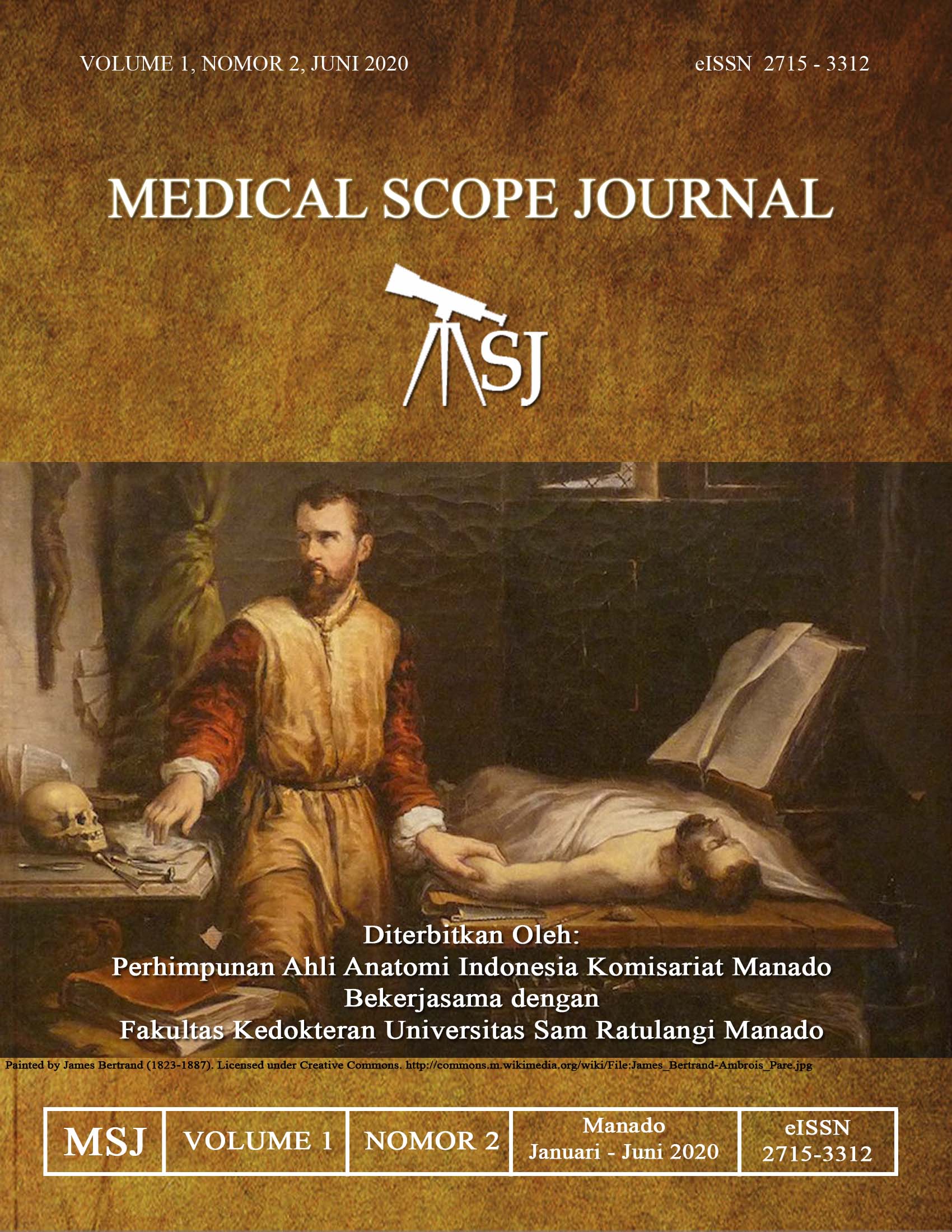Musculoskeletal Disorder pada Ekstremitas Atas akibat Penggunaan Telepon Cerdas secara Aktif pada Remaja Pelajar SMA
DOI:
https://doi.org/10.35790/msj.v1i2.28005Abstract
Abstract: Advances in technological development have led to increased use of smartphones. To date, the prevalence of musculoskeletal disorder (MSD) of the upper extremities is increasing and according to previous studies one of the MSD causes is the continued use of smart phones by high school students. This study was aimed to determine the prevalence of MSD of the upper extremities experienced in the last 7 days and to evaluate the relationship between MSD complaints and smartphone usage among adolescent high school students. This was an analytical study with a cross-sectional design. The instruments in this study were demographic questionnaire, smartphone usage, and modified Nordic Body Map Questionaire. Data were analyzed by using the Spearman Rho correlation test. There were 170 respondents (N = 170) involved in this study. Most of the MSD complaints were in the neck (n = 73; 42.9%), followed by in the shoulder (n = 61; 35.9%), and finger (n = 49; 28.8%). Most of the pain was categorized as mild pain. The Spearman Rho test showed significant correlations, as follows: between MSD in the neck and gaming as well as chat frequency (p=0.040); between MSD in the upper arm and one sesion gaming duration (p=0.005); and between MSD in the fingers and gaming duration in one sesion (p=0.007) and in a day (p=0.042). In conclusion, among adolescent high school students, frequency as well as duration of smartphone usage could influence the occurrence of MSD in the upper extremities.
Keywords: musculoskeletal disorder, smartphone, duration of usage, frequency of usage, gaming
Â
Asbtrak: Kemajuan perkembangan teknologi menyebabkan peningkatan penggunaan telepon cerdas. Prevalensi musculoskeletal disorder (MSD) dari ekstremitas atas meningkat dan menurut penelitian salah satu penyebabnya ialah akibat penggunaan berkelanjutan dari telepon cerdas oleh remaja. Penelitian ini bertujuan untuk mengetahui prevalensi MSD pada ekstremitas atas yang dialami dalam 7 hari terakhir dan mengevaluasi hubungan antara keluhan MSD dengan penggunaan smartphone pada remaja pelajar SMA. Jenis penelitian ialah analitik dengan desain potong lintang. Penelitian ini menggunakan kuesioner demografi, smartphone, dan modifikasi dari Nordic Body Map Questionnaire. Analisis statistik menggunakan tes korelasi Spearman Rho. Hasil penelitian mendapatkan 170 responden (N=170). Keluhan MSD paling sering dirasakan pada leher (n=73; 42,9%), bahu (n=61; 35,9%), dan jari tangan (n=49; 28,8%). Karakteristik keparahan nyeri yang dirasakan sebagian besar merupakan nyeri ringan. Uji korelasi Spearman Rho mendapatkan korelasi bermakna antara: keluhan MSD pada leher yang dialami dalam 7 hari terakhir dengan frekuensi gaming dan frekuensi chatting (p=0,040); keluhan MSD pada lengan atas dengan durasi gaming satu sesi (p=0,005); dan keluhan MSD pada jari tangan dengan durasi gaming dalam satu sesi (p=0,007) dan dalam sehari (p=0,042). Simpulan penelitian ini ialah frekuensi dan durasi penggunaan telepon cerdas berpengaruh terhadap timbulnya keluhan MSD ekstremitas atas pada remaja pelajar SMA.
Kata kunci: musculoskeletal disorder, telepon cerdas, durasi, frekuensi, gaming
Downloads
How to Cite
Issue
Section
License
COPYRIGHT
Authors who publish with this journal agree to the following terms:
Authors hold their copyright and grant this journal the privilege of first publication, with the work simultaneously licensed under a Creative Commons Attribution License that permits others to impart the work with an acknowledgment of the work's origin and initial publication by this journal.
Authors can enter into separate or additional contractual arrangements for the non-exclusive distribution of the journal's published version of the work (for example, post it to an institutional repository or publish it in a book), with an acknowledgment of its underlying publication in this journal.
Authors are permitted and encouraged to post their work online (for example, in institutional repositories or on their website) as it can lead to productive exchanges, as well as earlier and greater citation of the published work (See The Effect of Open Access).










